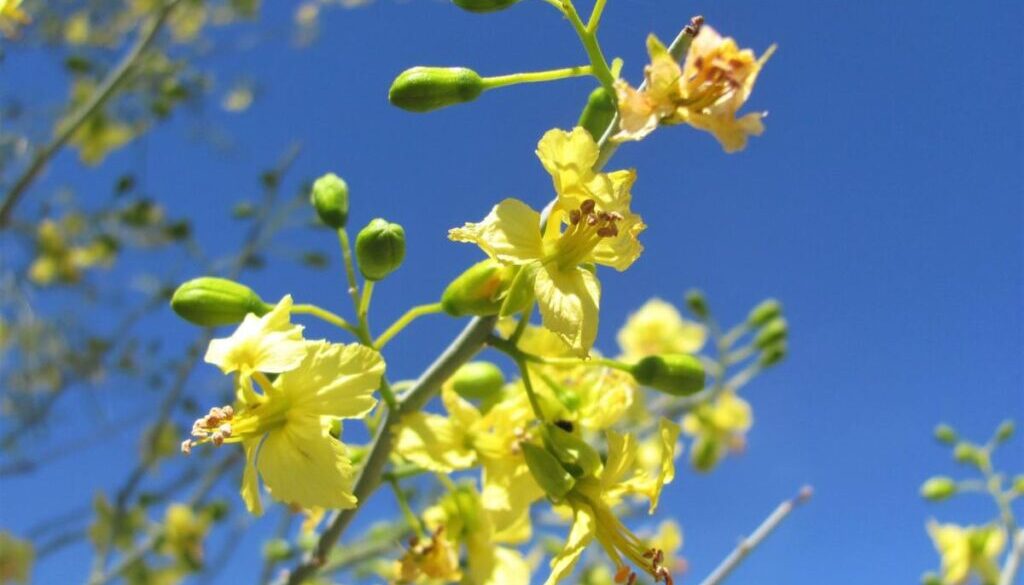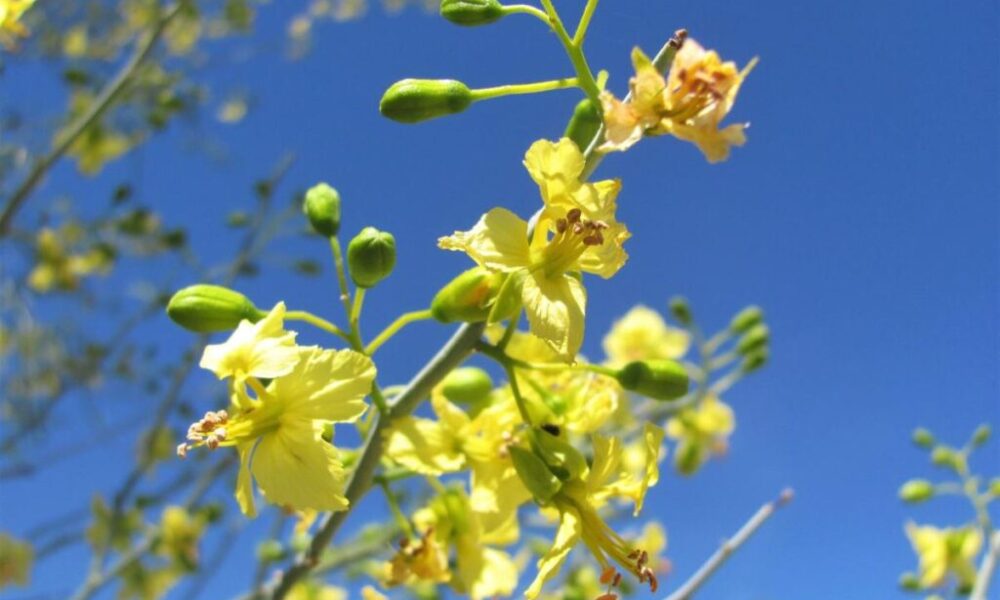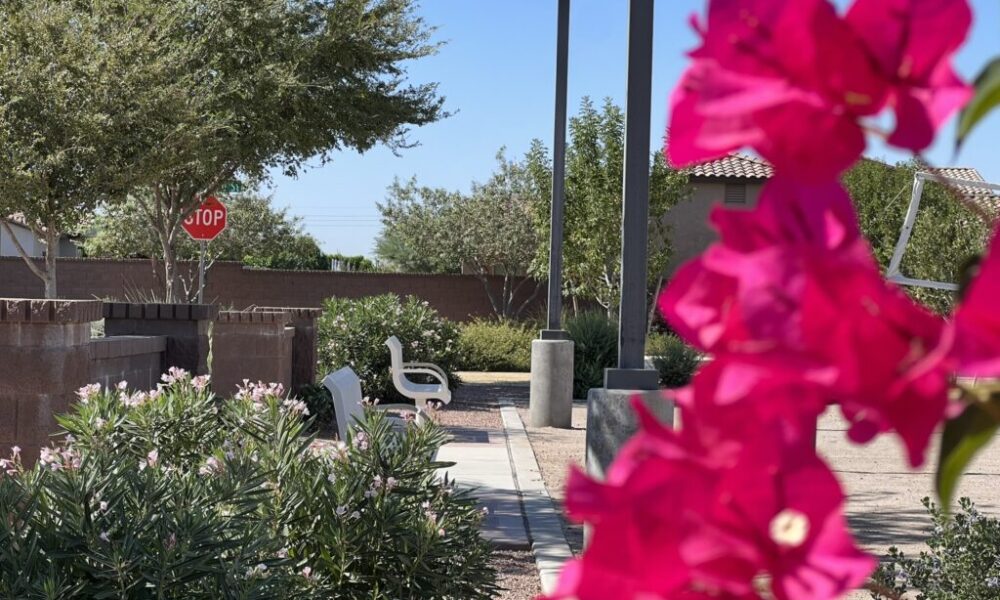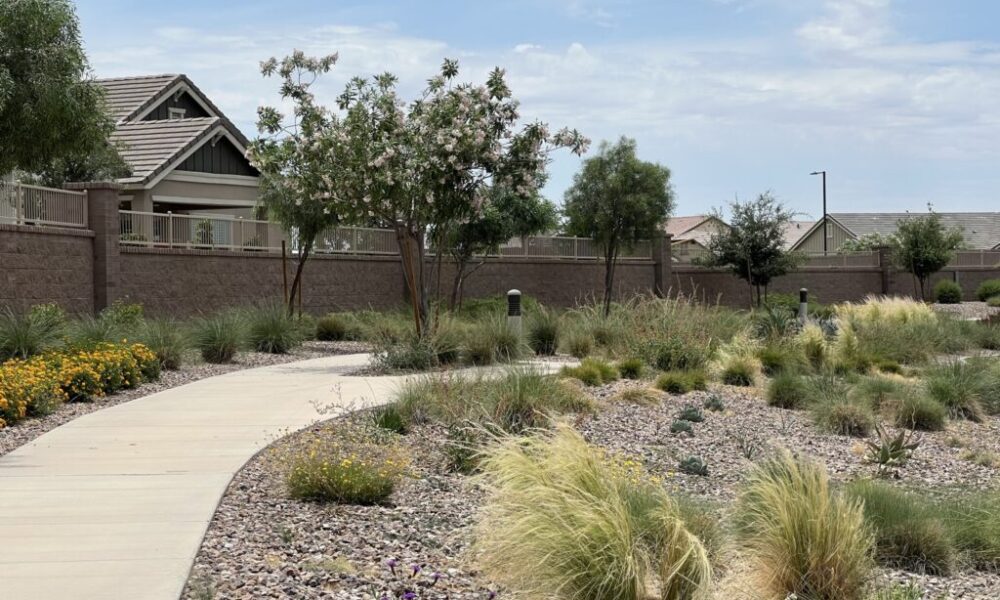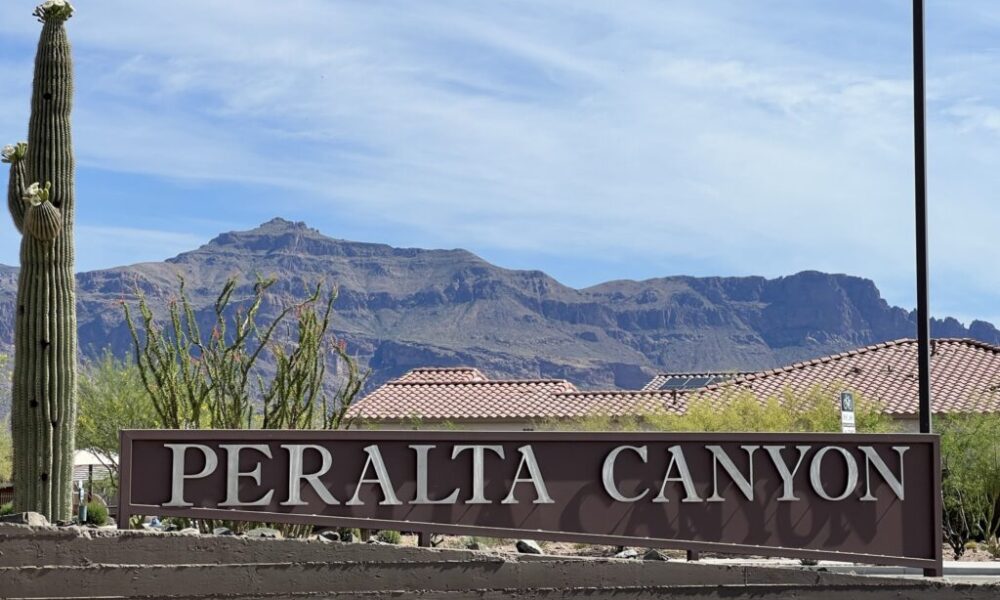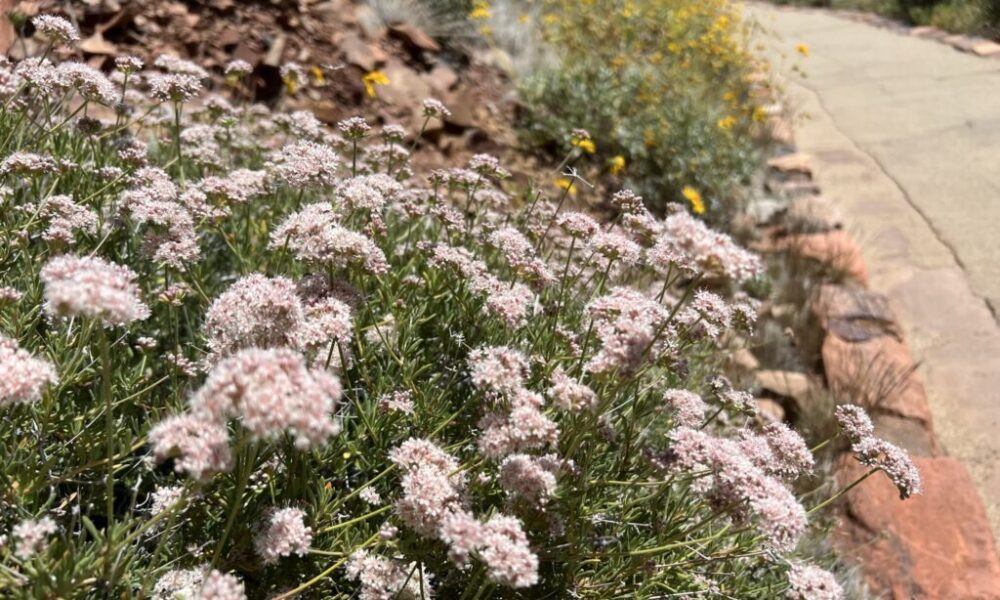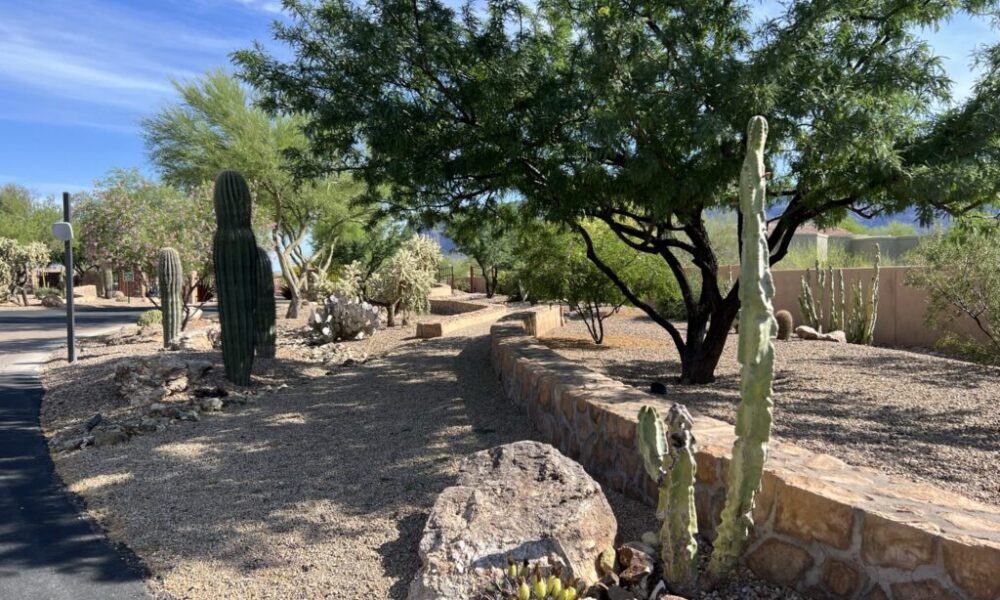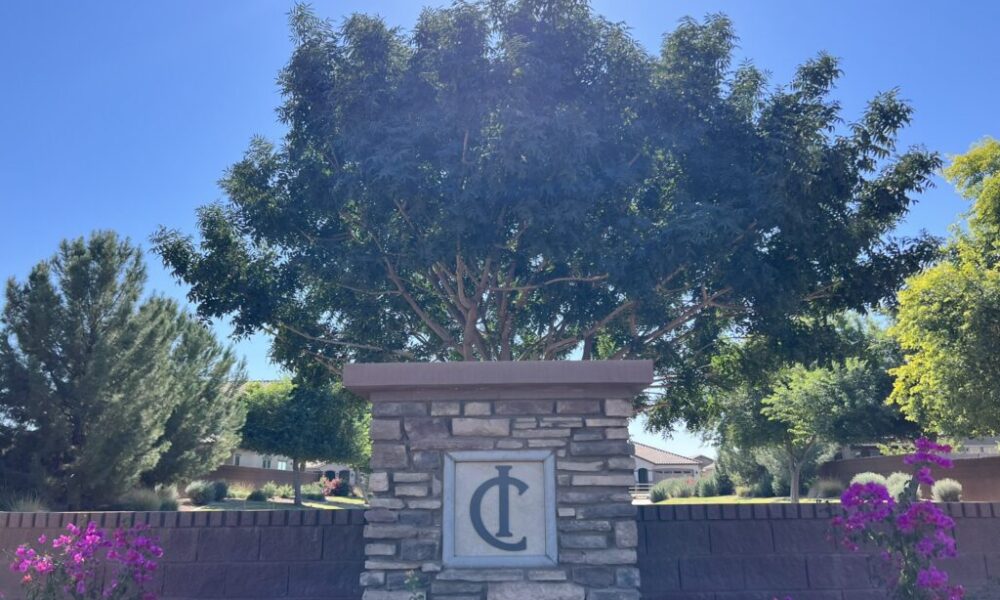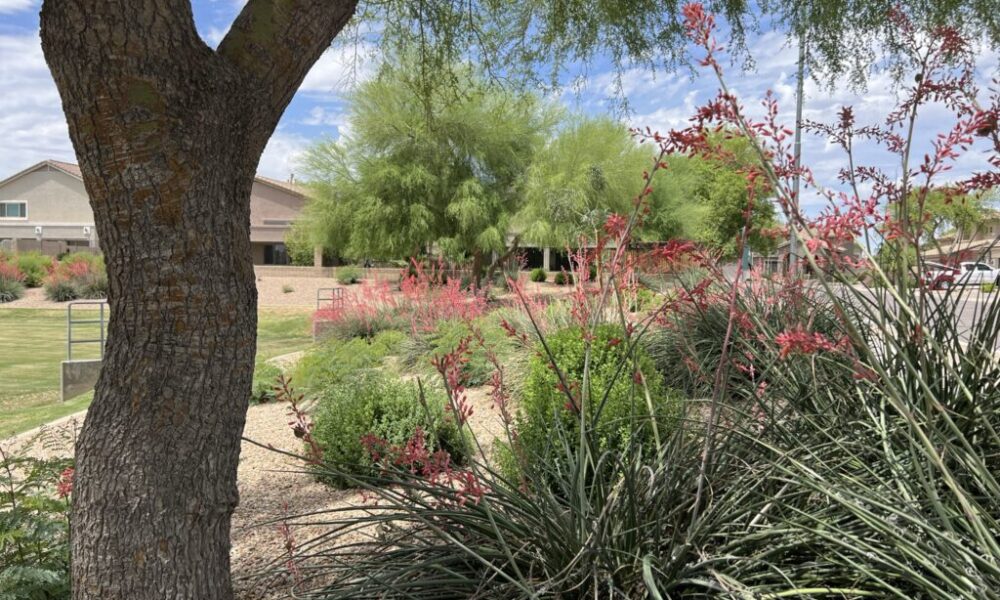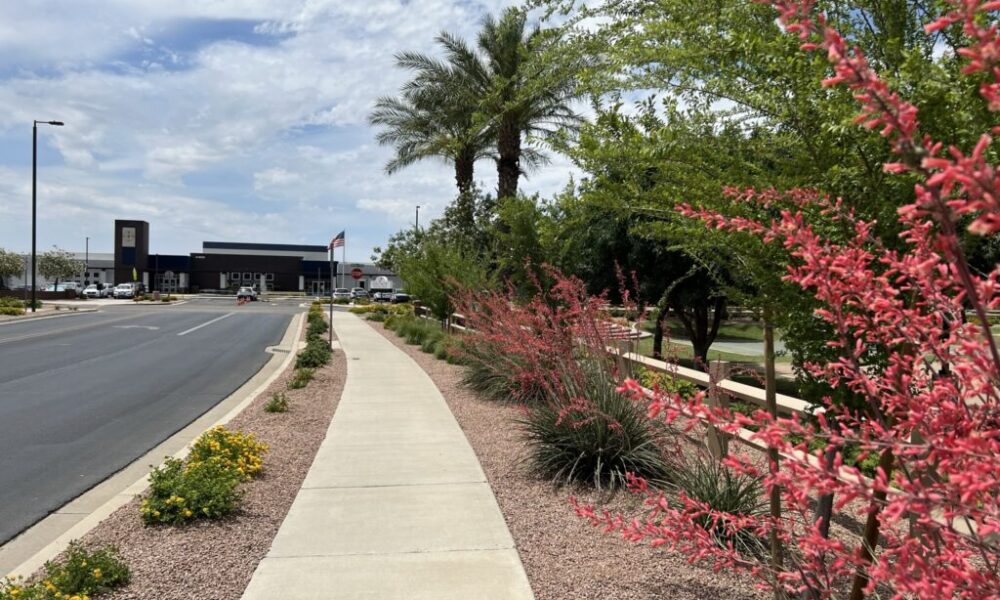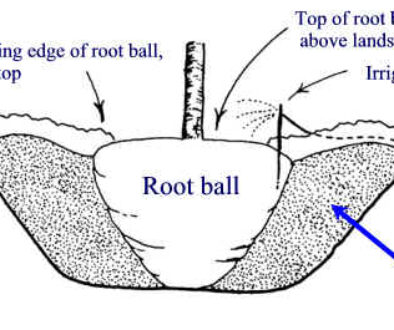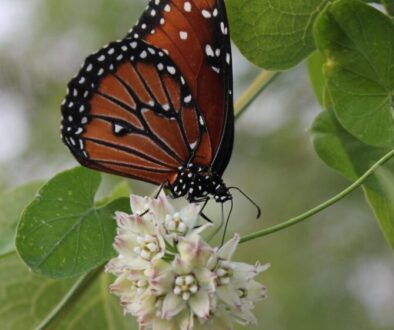Summer Watering and Nighttime Heat
Summer Watering and Nighttime Heat
The trees, shrubs, grass, and cacti that we use in Arizona landscapes are built to handle the heat. At least, they can handle the high daytime temperatures as long as the air and ground cool down in the night. There’s one big problem though: the past few summers have featured extended periods of nighttime temperatures above 90 degrees. Desert-adapted plants rely on cool nighttime temperatures to keep themselves alive. In fact, most desert shrubs and cacti only open their stomata (microscopic holes that plants breathe through) when the temperature is below a certain threshold. To generalize, it’s safe to say that it’s bad for the nighttime temperature to remain above 90 degrees for more than a week in a row. So, if this becomes a long-term trend, what should you do to protect your plants?
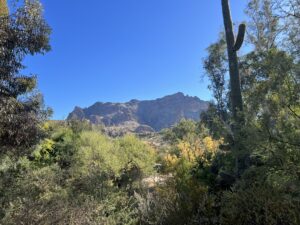
- Add water, strategically. The best watering tactic in the Sonoran Desert’s dense, alkaline clay soil is to water deeply but infrequently. If you’ve been watering your trees once a week for three hours, they will probably be okay even if the nighttime temperatures pass the critical threshold, as there will be a robust, wide-spanning root system full of water, and water in the soil keeping things cool. Perhaps just slightly increase the duration or add in an extra watering or two during a period of hot nights. If your trees and shrubs are watered every day for just a few minutes, they will be more at risk. By the time the hot nights arrive, you can’t switch their watering schedule immediately and expect things to be okay. Your best bet is likely to keep the daily watering and add an additional lengthy, heavy watering, perhaps by leaving a hose trickling for a few hours to hopefully keep the soil cool enough until the night temperatures sink back to sustainable levels.
- Add mulch to topsoil. Organic mulch, such as wood chips, compost, or manure, seal in more moisture than exposed clay and slowly releases nutrients to roots. Inorganic mulch, such as gravel or sand, provides no valuable nutrients but does create a buffer to keep that precious, cooling water from immediately evaporating into the desert air. This can save you money and save your plants’ lives during hot nights.
- Add more plants to your yard. Think of your yard in terms of its surface area. With no plants, your yard space would be exposed to the sun all day long, with the only shade being offered by manmade structures, sometimes. Soil exposed to the desert sun all day long gets really, really hot, and that heat can remain even at night. The more plants you add to your yard, the more surface area of soil that is now shaded and thus exposed to less heat. The roots of desert-adapted plants expand very far radially and remain shallow in the ground, meaning these roots are heated up by the sun almost as much as if they were exposed to the air. So logically, if you have more plants and more sources of shade, the temperature on and near the ground will be lower, evaporation will be slower, and the overall root ecosystem will be healthier.
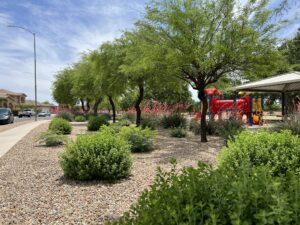
At ELS Maintenance & Construction, we install and replenish granite and other mulches to keep landscapes looking good and to conserve water. Additionally, we design our landscapes to create healthy, cooperative root biomes for trees, shrubs, and cacti alike. If you know of a community or commercial center that needs new landscapers, email contactus@evergreenaz.com and we can get started!

